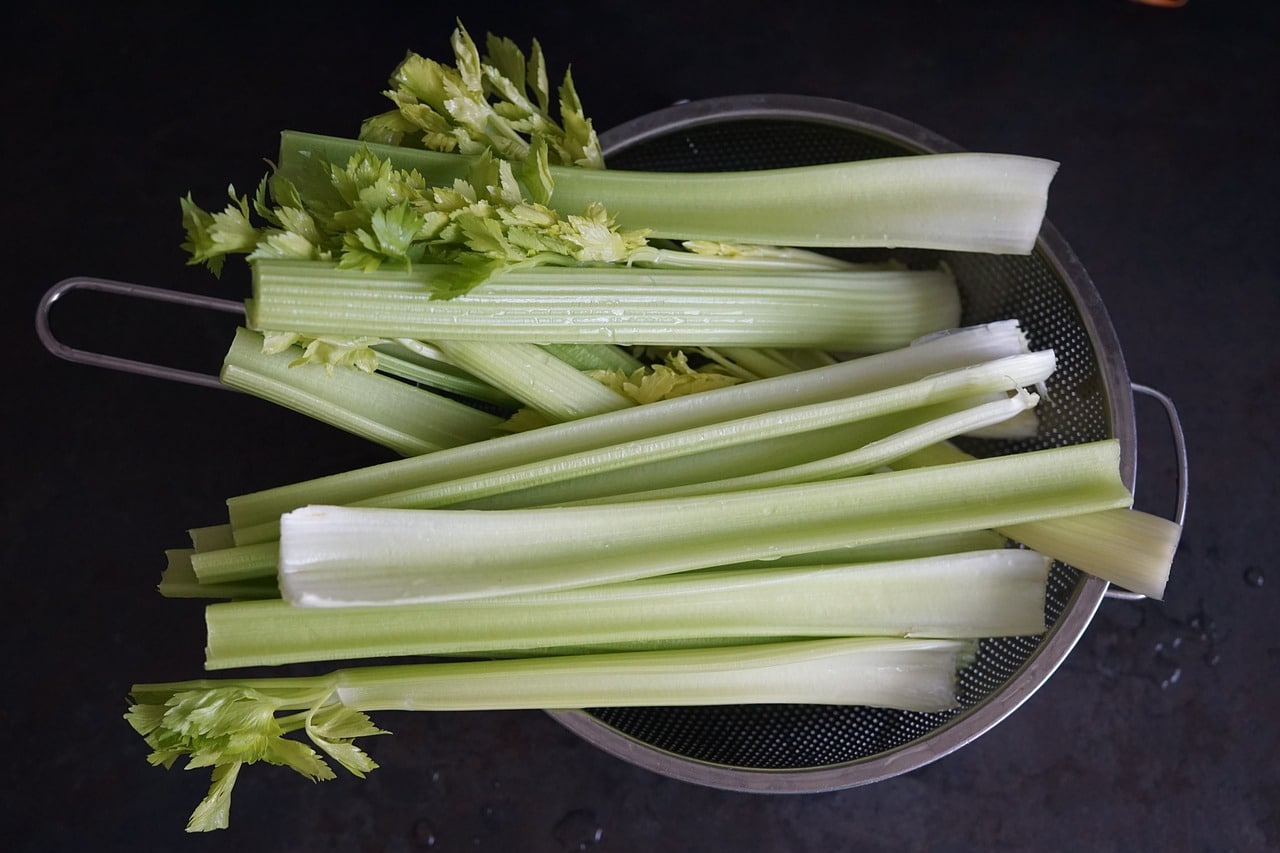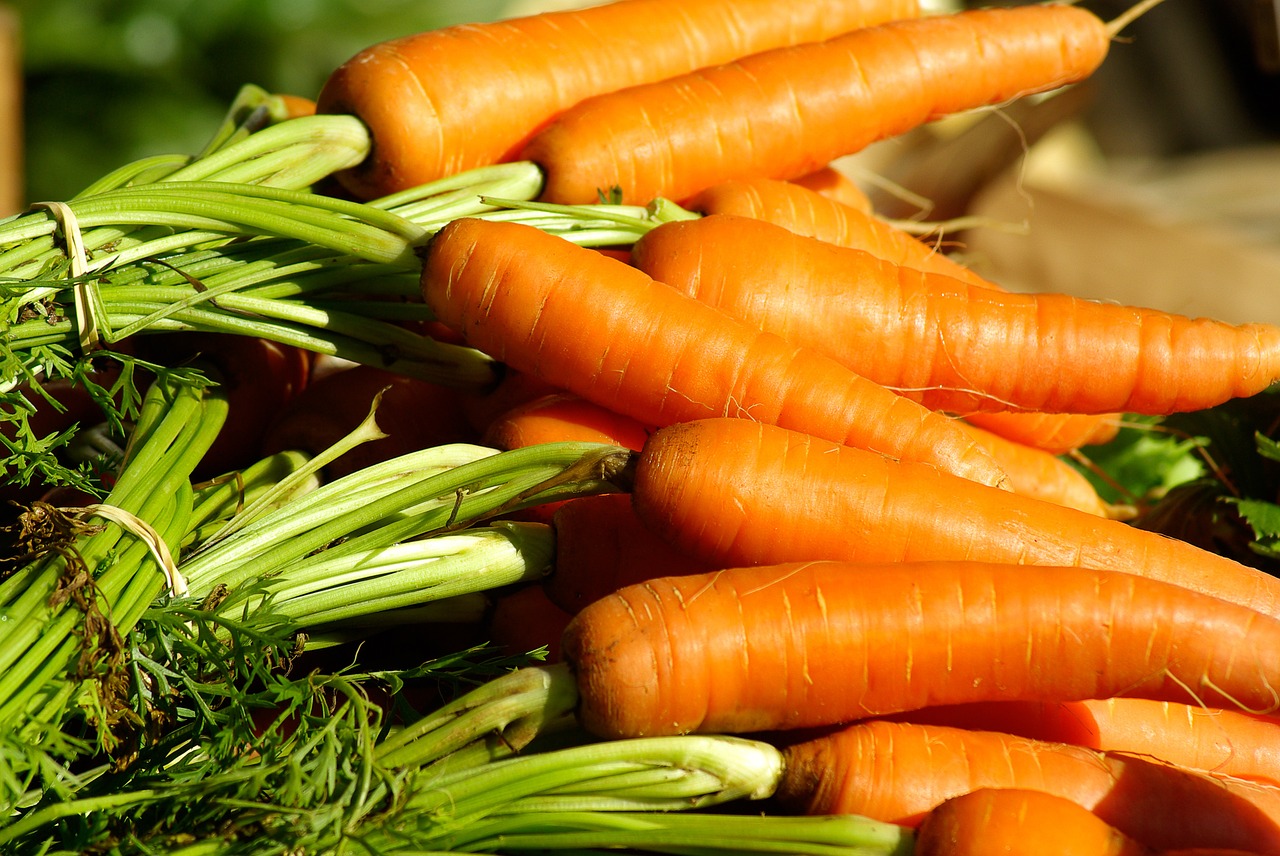[Article updated on 19/09/2023]
When you undertake a weight loss program, you are particularly concerned about the caloric intake of your foods. Besides, you are constantly calculating the calories ingested. Did you know that there are negative calorie foods?
Concretely, the energy required for their digestion is greater than the energy they provide. For example, a food provides 200 calories but requires 300 calories to be digested: it has negative calories.
This type of food is particularly interesting as part of a slimming diet. Here are my top 10 best negative calorie foods.
Top 1 negative calorie foods: raw celeriac
A 100 g stalk of raw celeriac contains:
- Protein: 1.5 g;
- Carbohydrates: 9 g;
- Lipids: 0.3 g;
- Fiber: 2 g.

The best celery is firm and does not sound hollow. Choose one that is neither too heavy nor too light. Also choose a vegetable whose skin is pale and does not have brown spots.
Put the food in the vegetable drawer of the refrigerator, peeled or not. It is best to eat it within 4 or 5 days after purchase to benefit from the best nutritional values.
Eat it raw, because cooked or boiled, the amount of nutrients it contains decreases.
This vegetable has great potential as a negative calorie food because it contains a lot of fiber.
Top 2: eggplant
A 250 g eggplant — average harvest weight — contains approximately:
- Protein: 1.20 g;
- Lipids: 0.30 g;
- Carbohydrates: 4 g;
- Water: 90 g;
- Fiber: 4g;
- Vitamins: 1.5 g;
- Potassium: 120 mg;
- Phosphorus: 15 mg;
- Magnesium: 15 mg.
Choose the eggplants smooth and shiny with sepals that stick to the touch.
Store the food in the refrigerator, but not for more than 12 hours, as it may lose its essential nutrients.
You can place it in the freezer if you absolutely must keep it for a longer period of time. In this case, wash it and cut it into slices of about one centimeter and let it immerse in water until it turns white, then add lemon juice. Finally, drain it, put it in an airtight bag and presto! in the freezer.
Top 3: leek
A 100 g portion contains:
- Protein: 0.90 g;
- Lipids: 0.20 g;
- Carbohydrates: 7 g;
- Water: 91g;
- Fiber: 1 g.
Negative calories increase tenfold thanks to the high presence of water.
You can store leeks in the refrigerator for over 3 weeks and in the freezer for around 12 months. If you choose to put it in the crisper, moisten it from time to time.
Before freezing it, you must first blanch it: cut the whites into pieces and bring it to the boil. The green having been previously cut should be used within 3 weeks in a soup or even in a salad as you wish.
Top 4: Pepper
In a 100 g cooked portion, there is:
- Protein: 1 g;
- Lipids: 0.30 g;
- Carbohydrates: 4.50 g;
- Water: 91.5 g;
- Fibers: 1.5 g;
- Calcium: 8 mg;
- Potassium: 160 mg.
Due to the low protein content and the high presence of water, negative calories will take your body by storm.
At the market, pick up firm peppers with shiny skin and no blemishes.
Keep them in a dry, cool place rather than in the refrigerator if you plan to consume it quickly. Otherwise, place them in the vegetable drawer for up to a week. Do not wash them and store them in a perforated bag.
If you want to keep your peppers in the freezer, wash them and remove the seeds and white membranes. Cut them as you wish. Spread the pieces on a baking sheet and leave to freeze for an hour first. Then put them in an airtight bag before putting them aside for good. The vegetable will stay fresh for a month.

Top 5: Black radish
In 100 g net of black radish, you find :
- Protein: 2.8 g;
- Carbohydrates: 0.6 g;
- Lipids: 0.1 g;
- Fibers: 2 g;
- Water: 93.5 g;
- Calcium: 54 mg;
- Potassium: 310 mg;
- Sodium: 8.50 mg.
The protein level of radishes is very high, as is the water percentage. Your body will therefore spend more energy to form negative calories.
Firm, shiny and smooth roots are the qualities that absolutely must be considered at the market. Press the flesh with your thumb to make sure the radish doesn’t give way.
You may have difficulty finding this vegetable. The ideal would be to grow it in your garden or in a large flower pot.
Wrap it in a damp cloth before placing it in the vegetable drawer. He could stay there for more than two weeks. Blanch it like eggplant if you plan to put it in the freezer to keep it longer (more than 3 months).
Top 6: Cucumber
A 100 g serving contains:
- Protein: 0.64 g;
- Lipids: 0.11 g;
- Carbohydrates: 2.04 g;
- Water: 96 g;
- Fibers: 0.6 g;
- Calcium: 19.2 mg;
- Potassium: 157 mg.
The cucumber must be consumed fresh. Its skin should be very green, smooth and firm, while its extremities are hard. Smaller sizes are tastier and contain fewer seeds.
It will keep for up to a week, placed in the vegetable drawer of your refrigerator. Cut, it is necessary to protect it with cling film.
Top 7: endive
In 100 g of endive, there are:
- Protein: 1.1 g;
- Lipids: 0.2 g;
- Carbohydrates: 3.15 g;
- Water: 95.5 g;
- Fiber: 1 g;
- Calcium: 24 mg;
- Potassium: 160 mg;
- Magnesium: 12.5 mg;
- Sodium: 2 mg.
To choose the right endive, make sure that the leaves are firm and the tips are free from browning. The base should also be hard and heavy depending on its size. In any case, it is better to choose the largest ones.
Endive is stored in a perforated bag in the vegetable drawer of the refrigerator. It will last about a week.
Top 8: Zucchini
100 g of cooked zucchini contains:
- Protein: 0.6 g;
- Lipids: 0.1 g;
- Carbohydrates: 2.5 g;
- Water: 94.5 g;
- Fibers: 0.9 g;
- Potassium: 170 mg.
Take the firmest ones that do not have black marks or spots and prefer the smaller ones.
Unfortunately, you can’t keep them in the fridge for too long. So buy them two or three days maximum before consuming them.
If you plan to put them in the freezer, you will need to slice or dice them, blanch them and put them in airtight bags.
Top 9: green beans
In 100 g of green beans there are:
- Protein: 2 g;
- Lipids: 0.20 g;
- Carbohydrates: 3 g;
- Water: 90 g;
- Fiber: 4g;
- Magnesium: 20 mg.
Choose green beans without spots, thin and firm. There are different varieties of this vegetable, but their nutritional values are more or less the same. To store them, wrap them in a damp towel.
Top 10: The carrot
In 72 g of carrots you will find:
- Protein: 0.7 g;
- Lipids: 0.2 g;
- Carbohydrates: 6.9 g;
- Fibers: 1.8 g;
- Many vitamins.
Take the largest, least wrinkled carrots. Also favor the darker and smooth ones. Avoid those that are split and soft to the touch.
To store them, cut the leaves and put them in an airtight bag in the freezer. Keep them away from fruit and scrub them well before cooking.

Note that negative calories are not found, they are formed. Foods low in energy will cause your body to use more for digestion. Knowing these products is very useful as part of a slimming program, because you will be able to compose healthy and diversified menus with the certainty of not exploding calories.
